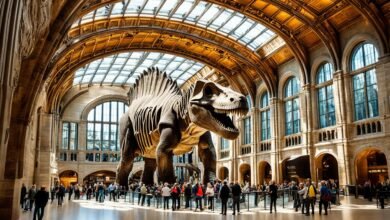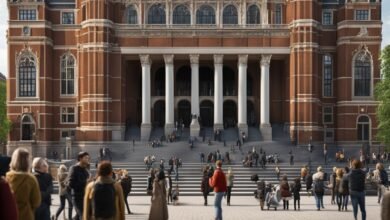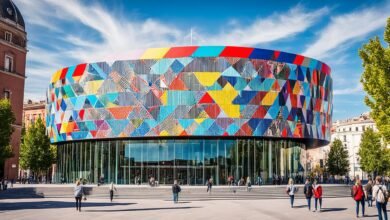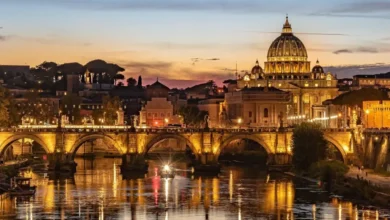Table of Contents
Buckingham Palace, an iconic symbol of the British monarchy, stands as one of the most recognizable buildings in the world. Located in the heart of London, it serves as the official residence of the reigning monarch and plays a crucial role in state affairs and national celebrations. This blog delves into the rich history, architectural grandeur, and cultural significance of Buckingham Palace, providing an in-depth look at its past, present, and future.
A Glimpse into History

Early Beginnings
The history of Buckingham Palace dates back to the early 18th century. Originally known as Buckingham House, it was built in 1703 for the Duke of Buckingham, John Sheffield. The house was a large townhouse in a marshy area that later became the London district of Westminster. Designed by William Winde, Buckingham House was a private residence until it was acquired by King George III in 1761 as a private retreat for Queen Charlotte, hence its alternate name, “The Queen’s House.”
Transformation into a Palace
The transformation from Buckingham House to Buckingham Palace began under King George IV, who ascended the throne in 1820. He commissioned architect John Nash to expand the house into a grand palace. Nash’s designs included a new suite of state rooms facing west into the garden, adding to the opulence and grandeur. The cost of these renovations was extravagant, ultimately leading to Nash’s dismissal. However, his vision laid the groundwork for the majestic structure we see today.
Victorian Era Enhancements
Queen Victoria was the first monarch to reside in Buckingham Palace permanently. When she moved in in 1837, the palace was far from the comfortable royal residence it is today. Major renovations were needed, including the addition of the iconic balcony from which the royal family greets the public during significant events. Architect Edward Blore was tasked with completing these improvements, including constructing a new wing facing The Mall, thus creating the palace’s iconic quadrangle structure.
Architectural Marvel
The Facade
Buckingham Palace’s facade is instantly recognizable with its Portland stone exterior, added in 1913 by Sir Aston Webb. This neoclassical facade replaced the original soft French stone that had deteriorated over time. The new design harmonized with the surrounding area, especially with the Victoria Memorial situated directly in front of the palace.
The Interior
The interior of Buckingham Palace is a testament to opulence and historical significance. The palace contains 775 rooms, including 19 state rooms, 52 royal and guest bedrooms, 188 staff bedrooms, 92 offices, and 78 bathrooms. Key areas of interest include:
- The Grand Staircase: This magnificent feature, designed by Nash, showcases an impressive collection of portraits, making the ascent a visual journey through royal history.
- The White Drawing Room: A splendid space used for official receptions and audiences. Its opulent decor, including gold-leaf details and elegant chandeliers, exemplifies royal grandeur.
- The Throne Room: Used for ceremonial and state occasions, it features twin thrones for the sovereign and consort, surrounded by rich red and gold decor.
- The Picture Gallery: Home to some of the most treasured artworks in the Royal Collection, including works by Rembrandt, Rubens, and Vermeer.
The Gardens
The gardens of Buckingham Palace are among the largest private gardens in London, covering 39 acres. They feature a diverse array of flora and fauna, a lake, and the famous Rose Garden. The garden is used for various official functions, including the Queen’s Garden Parties, which are attended by thousands of guests each year.
The Role of Buckingham Palace
Official Residence
Buckingham Palace serves as the official London residence of the British monarch. It is not only a home but also the administrative headquarters of the monarchy, where the Queen or King carries out many official duties. The palace hosts numerous events and receptions throughout the year, serving as a focal point for national celebrations and state occasions.
Ceremonial Functions
The palace is the site of many ceremonial functions, including:
- The Changing of the Guard: This iconic ceremony, performed by the Queen’s Guard, attracts thousands of visitors. It symbolizes the handover of responsibilities from one set of guards to another and showcases the precision and discipline of the British military.
- State Banquets: Held in the Ballroom, state banquets are formal dinners hosted by the monarch for visiting heads of state and dignitaries. These events are marked by their grandeur and strict protocol.
- Investitures: The monarch awards honors to individuals for their outstanding service to the nation. These ceremonies take place in the Ballroom and other state rooms.
- Trooping the Colour: An annual event celebrating the monarch’s official birthday. It involves a grand military parade and flypast, attended by the royal family and viewed by thousands of spectators.
Public Engagement
Buckingham Palace plays a vital role in engaging with the public. During the summer months, the State Rooms are opened to visitors, allowing the public to view the opulent interiors and learn about the history and functioning of the monarchy. Additionally, the Royal Mews, housing the state vehicles and horses, and the Queen’s Gallery, exhibiting art from the Royal Collection, are open year-round.
Cultural Significance
National Symbol
Buckingham Palace stands as a symbol of the British monarchy and the nation’s enduring traditions. It represents continuity and stability, having witnessed numerous historical events and changes in the country’s leadership. The palace’s image is instantly recognizable worldwide, often associated with the grandeur and ceremony of the British state.
Historical Events
Throughout its history, Buckingham Palace has been at the heart of many significant national events. These include:
- VE Day (1945): During World War II, Buckingham Palace was a symbol of resilience. On VE Day, the royal family appeared on the balcony to celebrate the Allied victory in Europe, a moment etched in the nation’s memory.
- Royal Weddings: The palace has been the site of numerous royal weddings, including those of Queen Elizabeth II and Prince Philip, Prince Charles and Princess Diana, and Prince William and Catherine Middleton. These events are celebrated worldwide and watched by millions.
- Jubilees: The Silver, Golden, and Diamond Jubilees of Queen Elizabeth II were marked by grand celebrations, including concerts, parades, and public gatherings, all centered around Buckingham Palace.
Influence on Arts and Culture
Buckingham Palace has significantly influenced British arts and culture. It houses an extensive art collection, including works by renowned artists and historical artifacts. The palace’s architecture and design have inspired countless works of literature, film, and television, solidifying its place in popular culture.
Buckingham Palace in Modern Times
The Reign of Queen Elizabeth II
Queen Elizabeth II, the longest-reigning British monarch, made Buckingham Palace her home and the center of her official duties. Her reign saw significant changes, including the modernization of many royal practices and greater engagement with the public and media. The palace played a crucial role during times of national crisis, providing a backdrop for the Queen’s addresses to the nation, including during the COVID-19 pandemic.
Recent Renovations
In recent years, Buckingham Palace has undergone extensive renovations to preserve its historical integrity and improve its functionality. The renovation project, set to be completed by 2027, includes updates to electrical wiring, plumbing, and heating systems. These upgrades are essential for maintaining the palace as a functional and safe residence and workplace for the monarchy and its staff.
Sustainability Initiatives
Buckingham Palace is also embracing sustainability. Initiatives include reducing energy consumption, improving waste management, and using environmentally friendly materials in renovations. These efforts reflect the broader commitment of the royal family to environmental conservation and sustainable practices.
The Role of the Palace in the 21st Century
As the monarchy continues to evolve, Buckingham Palace remains a symbol of continuity and tradition. It adapts to changing times while preserving its historical significance and cultural heritage. The palace continues to host state visits, official events, and public tours, maintaining its status as a key institution in British life.
Future Prospects
The Next Generations
With the ascension of King Charles III, Buckingham Palace continues to play a central role in the monarchy. Future generations, including Prince William and Prince George, will inherit this legacy, ensuring the palace remains a symbol of the British monarchy for years to come.
Public Accessibility
Efforts to increase public accessibility to Buckingham Palace are ongoing. Expanding visitor programs, enhancing digital engagement, and promoting educational initiatives help demystify the workings of the monarchy and foster a deeper connection between the public and the royal family.
Preservation and Innovation
Balancing preservation with innovation is key to the future of Buckingham Palace. Ongoing renovations and sustainability initiatives ensure the palace remains functional and environmentally responsible. At the same time, embracing modern technology and practices helps keep the institution relevant and engaged with contemporary society.
Conclusion
Buckingham Palace stands as a testament to the rich history, architectural grandeur, and cultural significance of the British monarchy. From its early beginnings as Buckingham House to its current role as the official residence of the reigning monarch, the palace has witnessed and shaped countless historical events. It continues to be a focal point for national celebrations, state affairs, and public engagement.
As the palace evolves to meet the demands of the 21st century, it remains a symbol of continuity, tradition, and the enduring legacy of the British monarchy. Whether through its opulent state rooms, historical events, or public tours, Buckingham Palace offers a unique and fascinating glimpse into the heart of Britain’s royal heritage.



